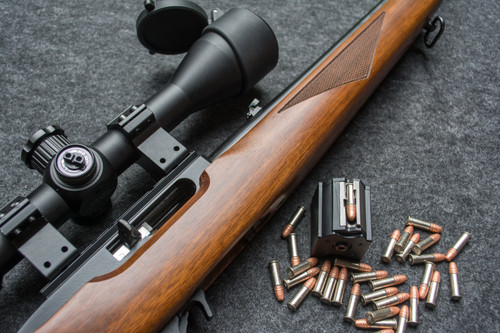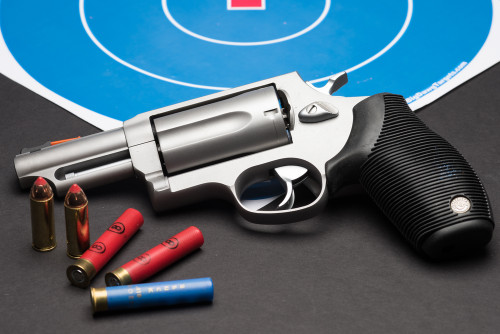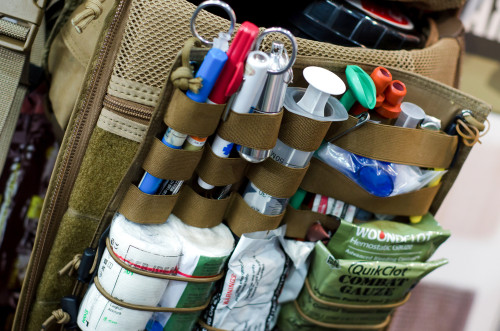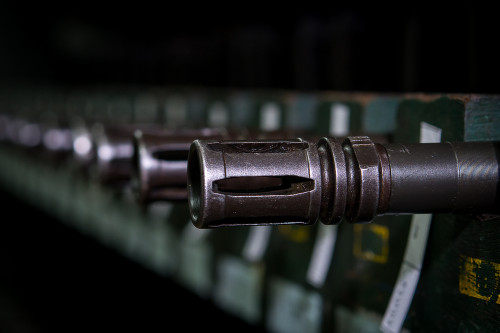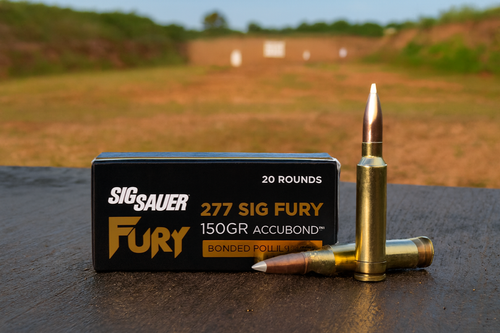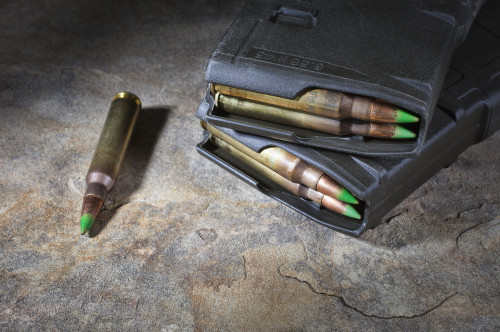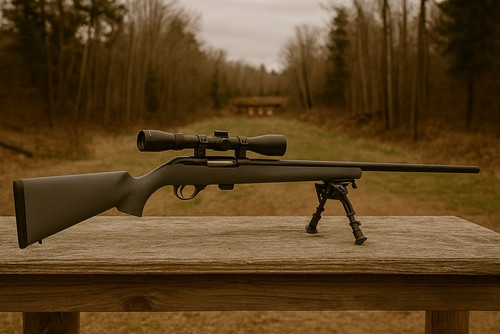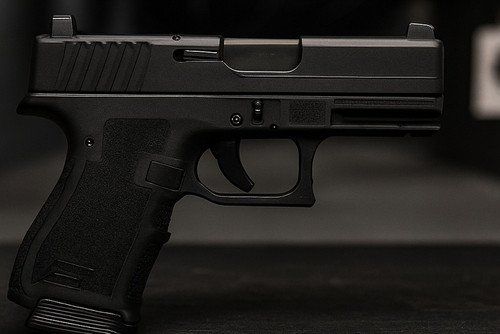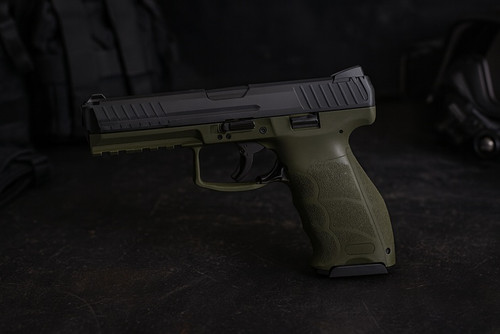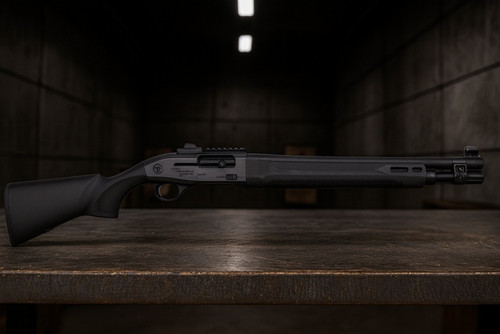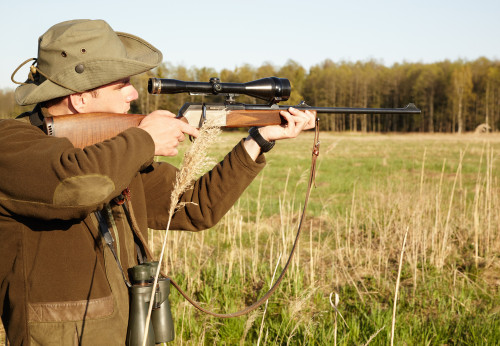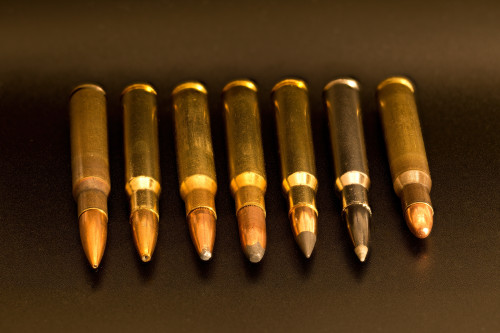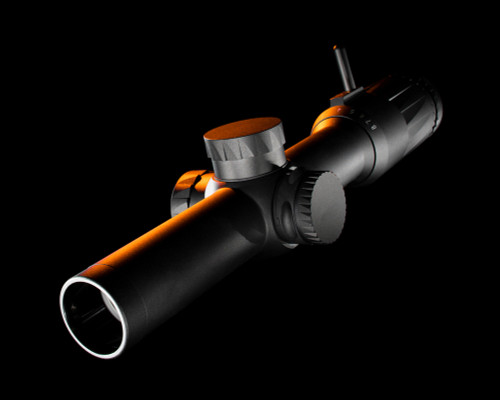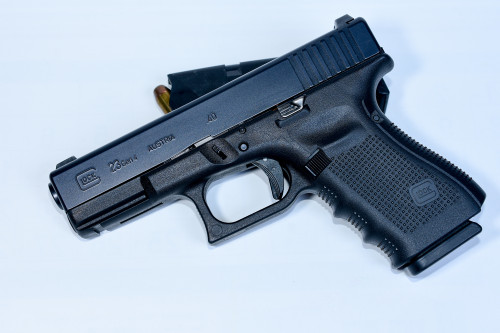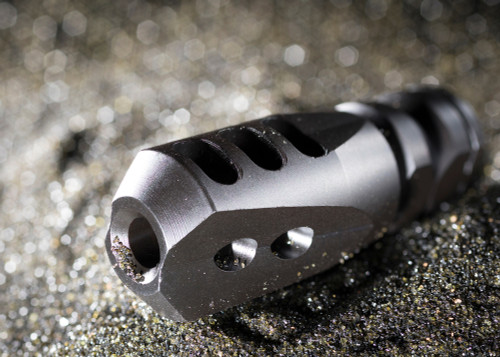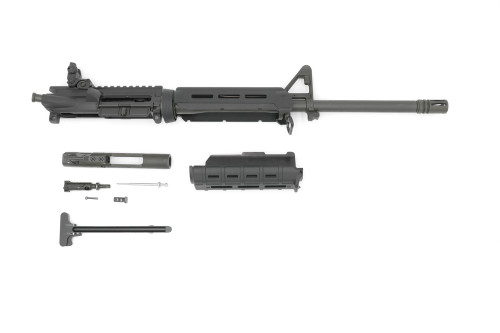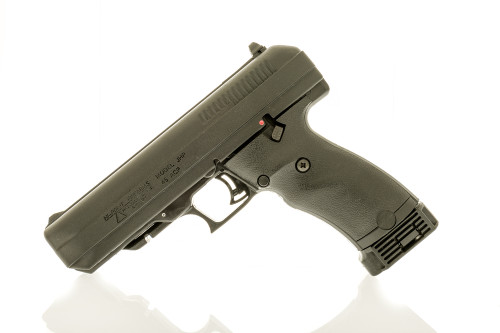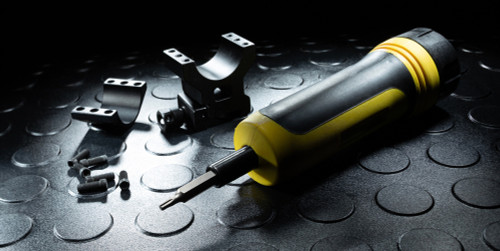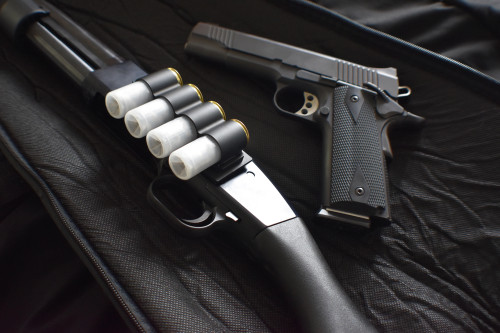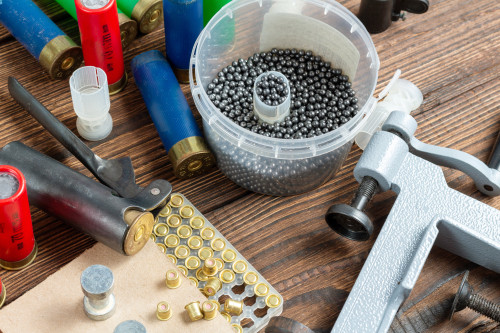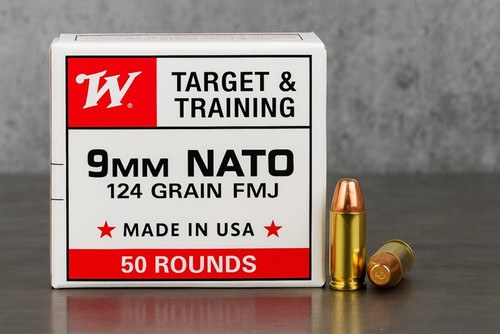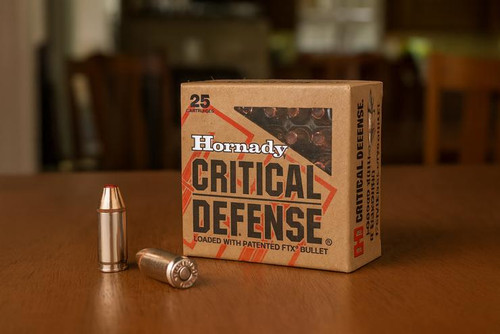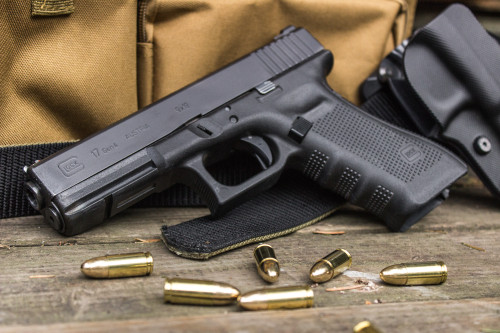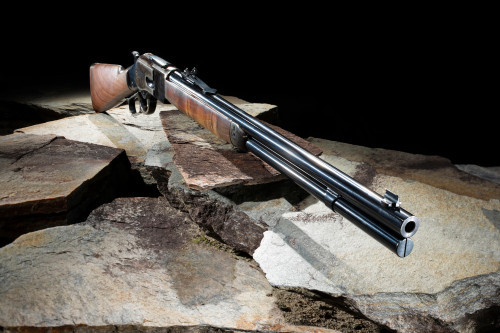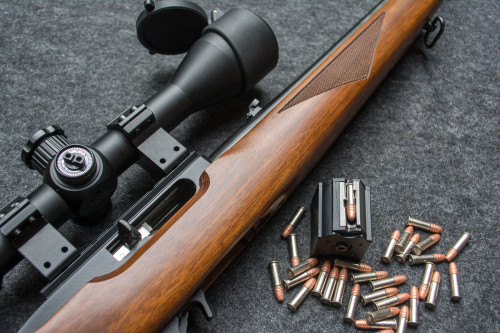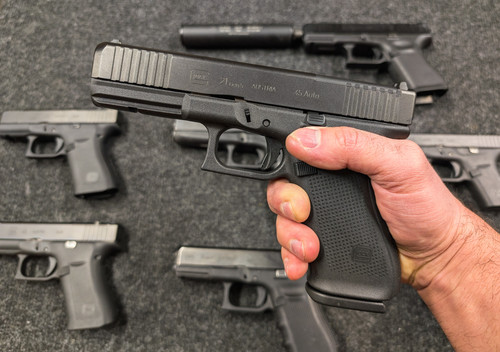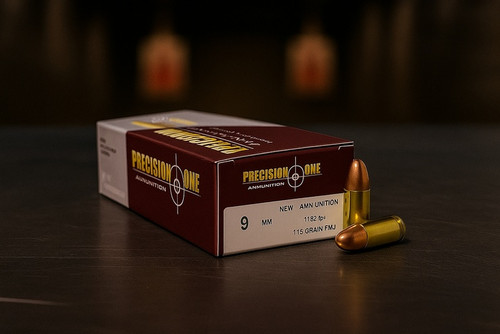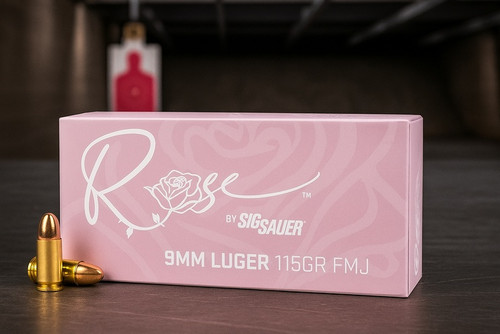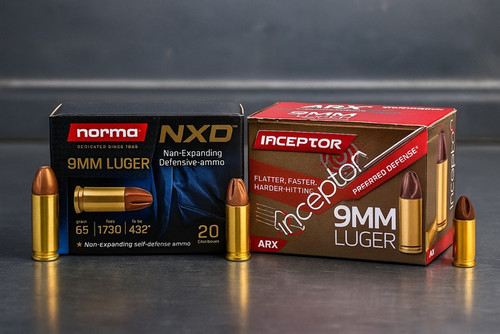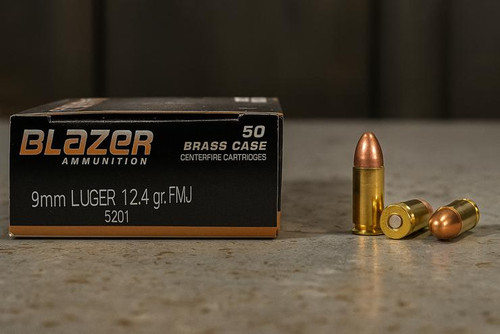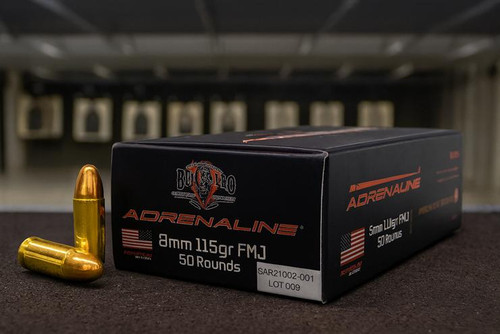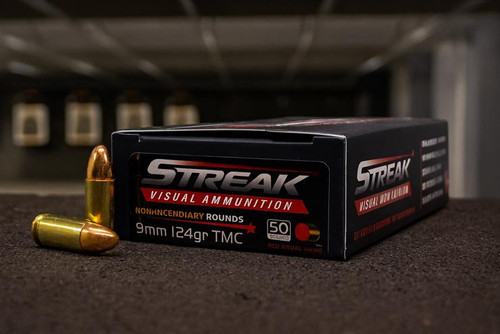If you’re at all familiar with firearms, you know there is a key distinction to be made with ammo: the bullet and the casing. Collectively known as a cartridge, this little item you shove into your gun can make a big difference upon impact. Even the smallest characteristics make a difference, including the casing type.
While most of us are used to seeing brass-cased ammo, this is far from the only option. Other bullet casing materials exist, and they’re not just for looks. Different types of bullet casings have different uses which cause the ammo to perform differently in your gun.
So, what kind of ammo do you need? What’s the difference between brass-cased, steel-cased, and nickel-plated brass? Let’s take a closer look at what ammo casings are, some of the most common casings materials on the market, and how to choose the best ammo casing.
Photo byTammy Doucette onUnsplash
What Is a Bullet Casing?
Before we talk about casings, let’s review what exactly makes up a round of ammunition. While people tend to use terms like bullet, brass, ammo, etc. interchangeably, they each have specific meanings.
First, the entire ammunition system (the cylindrical object that comes out of the box and goes into your gun’s magazine) is called a “round” or “cartridge”. A round of ammunition is composed of four parts:
- Bullet: the projectile that flies out of the gun when fired.
- Propellant: the material that explodes to create the gas that ejects the bullet.
- Primer: the explosive charge that ignites the propellant.
- Casing: the container that houses the components listed above.
Each component can be made of various materials that affect the function and performance of the ammo and firearm. Here, we’re focusing on the casing.
The casing is the ammo component that has the most contact with the gun. The bullet itself never touches the moving parts of the gun. Instead, the gun holds the casing, which holds the bullet. So, the casing material is especially important because it can affect the amount of wear and tear on the gun along with the overall function and reliability of the system.
Types of Bullet Casings
Here are some common ammo casing materials, including the properties of each material as well as pros and cons. Other types exist on the market, but these are the most common you will encounter while shopping for ammo.
(Source: www.usreloadingsupply.com/)
1. Brass Casings
Brass is the most common ammo casing type by far. In fact, the word “brass” all on its own is another common slang term to describe casings. Almost all ammo you encounter (in any caliber) will be brass-cased.
Brass is an alloy composed of copper and zinc. It’s a strong material, yet malleable enough to limit wear and tear on the gun. The malleability of brass makes it a good choice for reloading as the casings can be easily reformed for repeated use.
Pros
- Highly durable, yet malleable
- Easy on your gun
- Suitable for multiple reloads
- Common and easy to find
- Consistent and reliable
Cons
- Relatively expensive (not cheap)
- Relatively heavy
- Susceptible to corrosion in suboptimal conditions
(Source: www.smithwerder.com)
2. Nickel-Plated Brass Casings
These are similar to standard brass casings with the addition of a thin coating of nickel that helps resist corrosion and improve reliability. The smoother nickel surface further reduces wear and tear on the gun and improves ammo feeding and extraction. Also, the shiny nickel exterior is more easily visible in low light compared to other materials, which can be helpful in a late-night home defense situation.
Think of nickel-plated brass as premium brass rounds. They have all the advantages of brass, plus the added benefits of the nickel coating. Of course, as with most premium products, they include a bigger price tag.
Pros
- Durability of brass with corrosion resistance of nickel
- Improved round feed and case extraction
- Easy to see in low light
- Highly reliable
Cons
- More expensive than standard brass
3. Steel Casings
Steel is both lighter and cheaper than brass. This case material is a cost-effective alternative to brass and is available in a wide variety of calibers. The tradeoff is that steel-cased ammo is much harder and dirtier than brass and will beat up your gun. But if you’re just trying to get some cheap, dirty, rounds for plinking, you can’t beat classic Russian Tulammo.
Steel is an iron and carbon alloy, known for hardness and tensile strength. It is less malleable than brass, which makes it a poor choice for reloading. Most reloading equipment cannot effectively reform the case and make it safe to fire.
Steel casings are also known to have issues with sparking, so they are outlawed at some ranges. These casings are also more susceptible to corrosion than brass, so be sure to keep them clean and dry.
Pros
- Tough and strong
- Cheaper than brass
- Lighter than brass
Cons
- Can cause extra wear and tear on guns
- More susceptible to corrosion than brass
- Can’t be reloaded safely in most cases
- Outlawed at some ranges due to risk of sparking
- Dirty as hell to fire
(Source: www.primaryarms.com)
4. Zinc-Plated Steel Casings
Similar to nickel-plated brass, zinc-plated steel is a premium upgrade of a standard steel casing. The additional layer of zinc helps to resist corrosion, reduce wear on the gun, and support improved ammo feed and extraction.
These rounds are also much cleaner to fire than standard steel. Typically, steel rounds are coated in lacquer or polymer, which heats up when fired, melts, and generally makes a mess inside the barrel. Zinc holds up under the heat, so at least your gun is less dirty after firing.
Zinc-plated steel rounds are also a better choice for recycling compared to standard steel, but still not better than brass. This is a fairly new round design, so time will tell how it ends up faring in the ammo marketplace and in the minds of gun owners.
Pros
- More corrosion resistant than plain steel
- Less wear and tear on the gun
- Improved recyclability
- Cleaner than standard steel
Cons
- Still not as durable or reloadable as brass
- Zinc coating is easily damaged
- More expensive than standard steel
(Source: emptyshotgunshells.com)
5. Aluminum Casings
Aluminum is a lightweight metal used in a variety of applications from soft drink cans to aircraft parts — and bullet casings. Aluminum is lighter, cheaper, and softer than both steel and brass.
Aluminum is also more brittle than brass, especially under high heat and pressure. This makes aluminum rounds unsuitable for reloading. Attempting to reform and reshape aluminum rounds runs the risk of splitting the casing, which can be unsafe.
While these rounds are cheap and lightweight, they are known to have some reliability issues. As aluminum is soft and easily deformed, spent shells sometimes fail to properly extract, which can cause a jam. Jams are mostly fine if you’re on the range, but deadly if you’re in a gunfight.
Pros
- Lighter than both brass and steel
- Cost-effective alternative to brass and steel
- Soft metal that’s easy on your gun
Cons
- Not suitable for reloading
- Inconsistent performance and reliability
- Prone to splitting and deformation
(Source: basspro.com)
6. Total Polymer Casings
A general rule of the universe is that plastic is lighter and cheaper than metal, as well as waterproof and effectively impervious to corrosion. So, wherever possible, industry has sought to replace metal with plastic. This is an ongoing challenge in the ammunition industry because most plastics cannot withstand the extreme pressure and heat of an explosion.
Still, they try. Total polymer casings are their latest effort. Polymer rounds are light, cheap, waterproof, and corrosion-resistant. They also don’t conduct heat, which is important for anyone who has experienced hot brass going down the back of their shirt.
While these rounds do deliver most of the benefits of plastic, there are some tradeoffs. Most calibers are still unavailable in a total polymer case, and the exceptions have questionable reliability. The heat and pressure can deform the case, leading to malfunctions. Plus, they cannot be reloaded.
Pros
- Lightweight
- Low cost
- Corrosion resistant
- Waterproof
- Don’t conduct heat
Cons
- Durability problems
- Not available for all guns
- Feed and extraction issues
- Not reloadable
- Limited availability
(Source: Pexels)
Buying Ammo: Bullet Casing Factors To Consider
We’ve said it many times, but when it comes to guns, there is rarely a perfect solution. Instead, we’re always dealing with some balance of tradeoffs between factors.
When choosing a round, consider the following parameters:
- Durability: Different materials have varying properties of durability, which can affect optimal performance. A damaged or deformed casing will most likely cause a jam or misfire.
- Corrosion: Some materials are more prone to corrosion than others, which can affect the shelf life of your rounds and the environments they are best suited for.
- Weight: Different materials mean different weights per round, which can be significant if you’re carrying a lot of ammo or other heavy loads.
- Hardness: Some materials are more stressful to the delicate parts of your gun than others. Harder materials can beat up your gun and wear it out faster than others.
- Reloading: Different materials have different suitability for reloading. If a material is too hard or too soft, it lacks the properties to be safely and effectively reformed for recycling.
- Cost: Different materials are available at different costs, which can be significant if you’re firing a lot of rounds — or stocking up for the apocalypse.
Choosing the Right Bullet Casing
The best ammo casing always depends on the specific scenario where it will be used. Here are our picks for the best casing types for the most common shooting situations:

Hornady Outfitter 300Prc 190Gr Cx 20/200
$51.20
Hornady Manufacturing
Prices accurate at time of writing
Hunting
Recommendation: Nickel-Plated Brass or Zinc-Plated Steel
As hunting is generally done outdoors (we hope), your hunting ammo is under constant stress from the elements. Moisture, dirt, sweat, and more can all affect the effectiveness of your ammo, so your rounds need to hold up under the pressure.
Nickel-plated brass is perfect for the job, and since you’re not going through that much ammo on a typical hunt, the higher price point can be justified. However, if you’re still looking to save cash (or you hunt A LOT), zinc-plated steel offers similar benefits at a lower cost.

Pmc Bronze .223 Remington 55 Grain Full Metal Jacket
$9.50
PMC Ammunition
Prices accurate at time of writing
Competition
Recommendation: Brass
In competition, the key factors to look for in a round are consistent performance, reliable cycling, and overall precision. In most cases, brass is your best bet — and since you want to practice extensively with the rounds you’ll use in competition, it’s best not to break the bank on your choice of rounds.
Also, competitions are usually held under ideal conditions, so the benefits of nickel-plated brass might be unnecessary here.

Federal Premium 9Mm 147Gr Jhp
$28.99
Federal Ammunition
Prices accurate at time of writing
Self-Defense
Recommendation: Nickel-Plated Brass
In self-defense situations, the single most important ammo factor is reliability. There is no room for error, so it’s essential to use ammo that offers the highest probability of success. Nickel-plated brass is your best bet to ensure smooth feeding and extraction, particularly when firing multiple rapid shots, as many self-defense situations require.
Plus, nickel has the added benefit of increased visibility, which can help you spot your rounds in the dark (most home invasions happen at night). With the tunnel vision of extreme stress, you need every advantage you can get to ensure success.

Tulammo 7.62X54R 148 Grain Full Metal Jacket - 100 Rounds
$63.00
Tulammo
Prices accurate at time of writing
Range Training
Recommendation: Steel or Aluminum
For high-volume shooting, affordability is a key factor. The more rounds you shoot, the more the cost per round matters. Steel and aluminum reduce costs without sacrificing too much performance.
Though you’ll spend time practicing with your concealed carry rounds, there is no reason to do all your training with premium ammo. Steel and aluminum help you get in the repetitions you need without going into debt.
However, if you have the gear, time, and inclination to reload your rounds, you are much better off sticking with brass. If you shoot a lot, reloading can significantly decrease your cost per round, and brass is the best choice for recycling.
Final Thoughts
Bullet casings may seem like a small detail, but they play an important role in the overall performance and reliability of your ammo. By understanding the different types, materials, and properties of ammo casings, you can make an informed choice about which is best for you.
Whether you’re a competitive shooter, a hunter, or just a committed concealed carrier, there’s a casing type that’s right for you. Take the time to experiment and find what’s optimal for your firearm, budget, and personal preference.
If you’re ready to invest in some ammunition and start practicing, Pro Armory has you covered. Check out our complete selection of handgun and rifle ammo.









